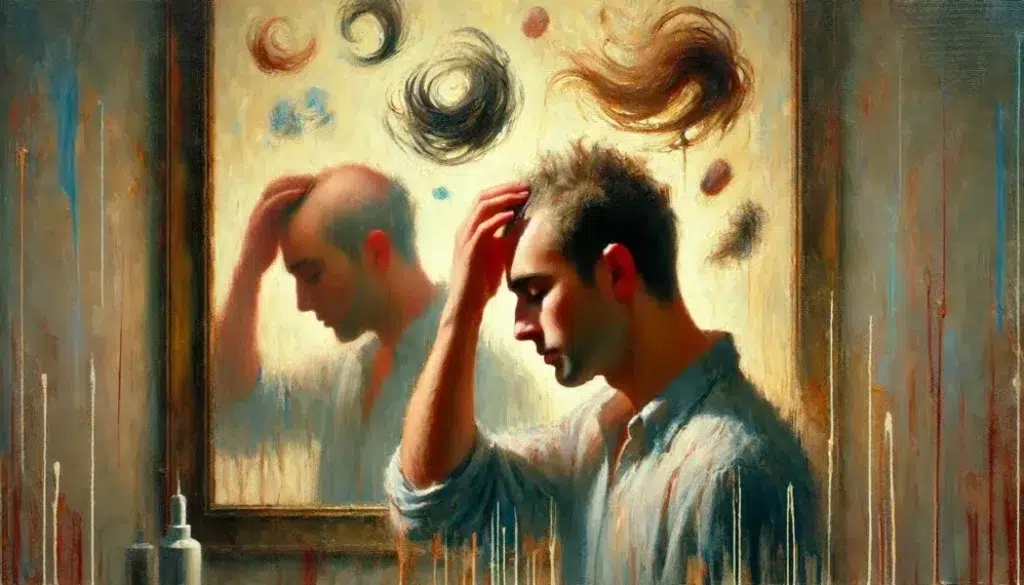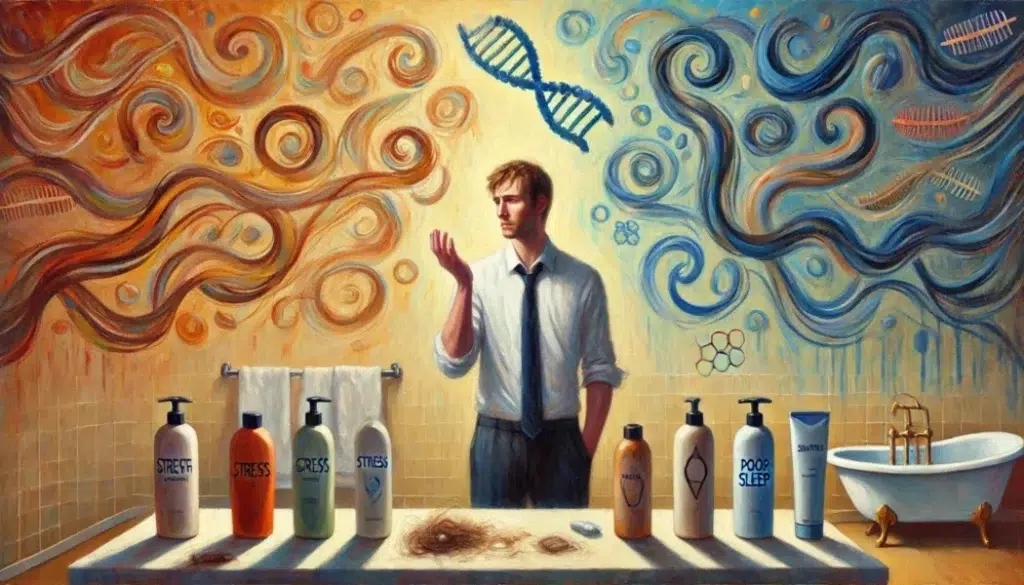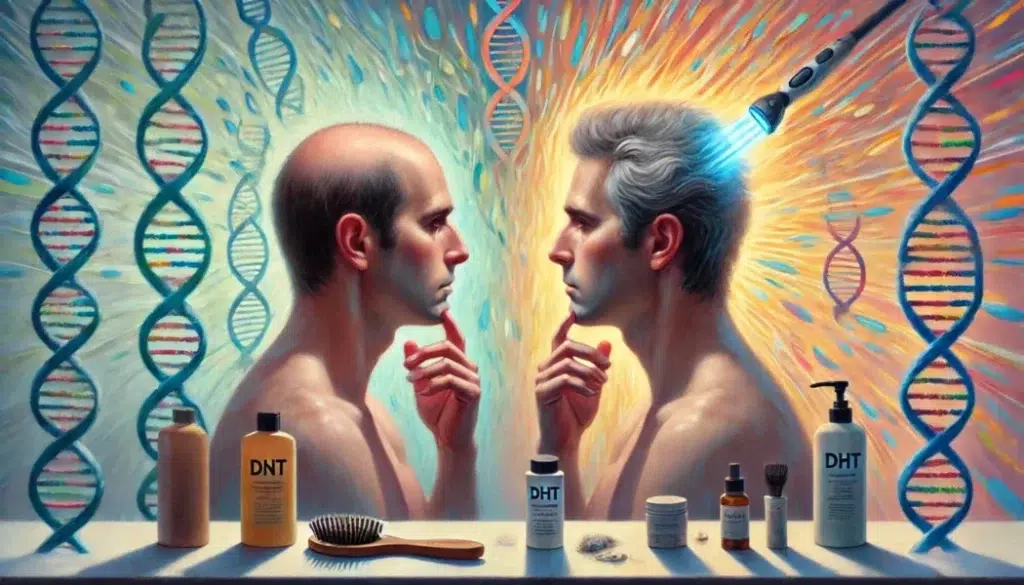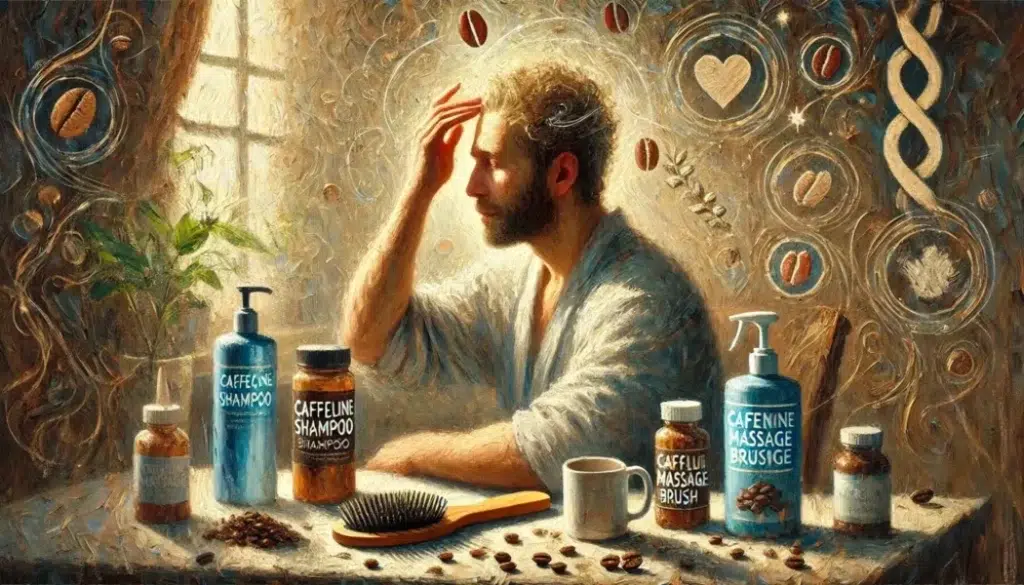Spotting early hair loss can feel like finding a needle in a haystack. Subtle changes often go unnoticed, but keeping an eye on these hints can make a difference. One of the first is excessive shedding. Normally, losing about 50 to 100 strands a day isn’t a cause for alarm. But when you notice a mini hair blizzard during your shower, it might be time to pay attention.
Thinning at the crown is another clue to watch out for. It starts with less volume and density, making your hair look flat or dull. Check the mirror, and if your scalp’s peeking out where it didn’t before, that’s a sign.
The receding hairline is arguably the most telling sign of early hair loss. But, surprise, it’s not always about balding. Sometimes, it’s your hairline naturally maturing, especially if you’re seeing it in your late teens or early twenties. Still, if it’s moving faster than your schedule on a Friday afternoon, it’s worth looking into.

Not sure if it’s hair breakage or actual hair loss? Hair breakage means your hair snaps mid-strand, often due to damage, while hair loss is when it falls from the root. Each has different causes and treatments, which you can explore further in articles like ‘Hair Breakage vs. Hair Loss.’
Lastly, don’t ignore scalp irritation. It can signal underlying issues that might contribute to hair loss. Frequent itching, redness, or even flakes need your attention, and you can dive deeper into this with resources on ‘Scalp Irritation.’
🔎 Deciphering Normal Shedding vs. Genuine Hair Loss
It can be tricky to distinguish between normal shedding and actual hair loss, almost like trying to tell twins apart at first glance. Hair goes through its own renewal process, called the hair growth cycle—consisting of growth, rest, and shedding phases. So, some shedding is totally natural.
Yet, when things go beyond the usual, it’s worth examining. If you’re seeing more strands than usual around your home, it might not be merely seasonal shedding. Seasons play their role in hair turnover, but persistent or heavy shedding suggests something else might be happening.

🧬 Androgenetic alopecia, or male-pattern baldness, is a classic culprit and often genetically inclined. But don’t panic prematurely. Other factors like:
- Chronic stress 😣
- Poor sleep 💤
- Harsh shampoos or styling habits 🧴
can trigger telogen effluvium, a temporary condition where hair sheds rapidly due to sudden disturbances.
Want to dive deeper? Check out: [How Stress Affects Hair]
📉 Unveiling the Hairline: Natural Change or Baldness?
A receding hairline can be like an optical illusion—sometimes more than meets the eye. For many, it’s just a rite of passage, a natural part of aging. For others, it marks something more drastic like the start of male-pattern baldness.
Genetics play a significant role here, dictating how and when your hairline decides to make its move. If family members sport higher foreheads as they age, chances are you might too. But don’t equate every shift with impending baldness—sometimes it’s just your hairline growing up, not out.
Visual guides can be a lifesaver, offering side-by-side comparisons to help figure out if your hairline’s simply maturing or truly retreating. Despite the panic that can come with finding your forehead taking more spotlight, some tools can help slow the process.

🧴 DHT-blocking shampoos, paired with a nourishing conditioner containing 5% minoxidil, can provide support for weakening follicles. For enhanced effect, try a scalp massage brush to boost circulation and improve product absorption. This combo not only helps block DHT but also deeply hydrates and strengthens the strands.
💡 Want a techy boost? Consider laser caps, which use light therapy to support hair growth right at the follicle level.
Recognizing these nuances can empower you. With some visuals and a little innovation, there’s hope and help in maintaining your crowning glory.
🥦 Harnessing Nutrition for Hair Health and Loss Prevention
What you eat doesn’t just fuel your day; it can also impact how your hair behaves. Think of your diet as the soil in which your hair grows. Happy soil, happy hair! Nutrients like biotin, collagen, and zinc are big players in the dandruff-free and luscious lock game.
Biotin, often touted as the hair hero, supports protein building blocks for hair. Collagen, a powerful protein found throughout the body, offers structure to your locks. Zinc, meanwhile, contributes to keeping hair oily, in the good way, not the greasy kind. All these nutrients play their roles in hair health, supporting the underlying infrastructure for a stronger mane.

For those looking to give nature a helping hand, supplements can bridge nutritional gaps. Many embrace these in the form of daily tabs or gummies. It’s an easy swoop into better hair days without much extra effort. Affiliate links for these can be found in various health and wellness stores online, offering convenience and diversity tailored to your needs.
Curious to dive deeper into what your pantry can do for your hairline? Consider exploring resources on ‘Best Nutrients for Hair’ and discover fermented hair products, which pack a punch with probiotics and all things good.
A well-fed head of hair doesn’t just feel good—it looks it, too. Eating right ensures your insides are as cared for as your outside image, creating a holistic approach to addressing hair concerns.
🧴 Exploring Non-Medical Reversals of Early Hair Loss
Who says you need a prescription to kick-start some hair revival? There’s a world of natural approaches out there eager to lend a helping strand. From caffeine-infused serums to scalp massages, these alternatives offer a less conventional route to regrowing or maintaining what you’ve got.
Caffeine doesn’t just perk up your mornings; it’s also known to boost blood circulation right on your scalp, waking up those sleepy hair follicles. Next time you’re shampoo shopping, keep an eye out for caffeinated options—it might just be the brew your hair needs.
Scalp massages, on the other hand, can feel like a divine intervention. Not only does it stimulate your roots, but it can also become a relaxing ritual, a break in your day that your follicles will thank you for. It’s a low-cost and accessible way to increase blood flow and maybe even thickness over time.

And then there’s microneedling, a dermatologist-endorsed technique making waves in the DIY world. This involves tiny punctures on the scalp to encourage healing and hair growth—a bit like aerating the lawn in hopes of a lush regrowth. While it might seem daunting, learning more through reliable guides can make this technique an inside job.
📖 For more on these exciting alternatives, check out discussions on ‘Microneedling’ and ‘Caffeine for Hair Growth.’
Experimenting with these natural remedies can be a fun journey. Think of it as a permission slip to pamper yourself under the guise of practical self-care—because who wouldn’t want to have fun while potentially boosting their hair game?
🧾 Conclusion: Don’t Wait for the Bald Truth
Early signs of hair loss aren’t here to scare you—they’re here to inform you. What starts as a few extra strands in the sink can quickly escalate if left unchecked. But that doesn’t mean panic—it means action.
✨ Pay attention to the signs. ✨ Nourish your body and scalp. ✨ Explore both conventional and alternative routes.
By building a routine that includes proper care, nutrition, and targeted products, you’re giving yourself a real chance—not just to slow down hair loss, but to reclaim control.
Even small changes can lead to noticeable improvements over time. You don’t need to do everything—but you do need to do something. And the sooner, the better.
🎯 Let this article be your starting point. Because hair loss may be common—but doing nothing about it shouldn’t be.

❓ FAQ: Recognizing and Responding to Early Hair Loss
🪞 What are the first signs of male hair loss?
The earliest signs include a receding hairline, thinning at the crown, excessive shedding in the shower or on your pillow, and reduced hair density over time.
🧬 Is early hair loss always genetic?
Not always. While genetics play a major role, factors like stress, poor diet, hormonal imbalance, and scalp inflammation can also contribute.
🧴 Can early intervention reverse hair loss?
In some cases, yes. Treatments like minoxidil, DHT-blocking shampoos, and laser therapy can slow or partially reverse early hair loss if used consistently
🧠 How do I know if I’m just shedding or actually losing hair?
Shedding about 50–100 hairs daily is normal. If you notice visible thinning, bald patches, or a consistent change in hairline shape — it may be early hair loss.
🧾 Last updated: June 2025 based on current clinical guidelines and user reports.


Leave a Reply